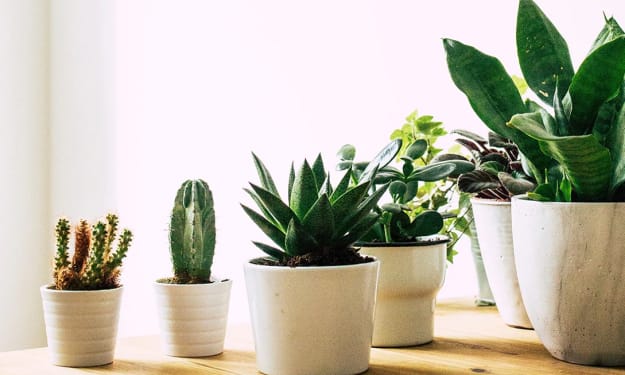How to Care for Snake Plants
How to Care for Snake Plants

Caring for Snake Plants (Sansevieria) is relatively easy, making them a popular choice for indoor plant enthusiasts. These hardy plants are known for their resilience and air-purifying qualities, making them a perfect addition to any home or office space. In this comprehensive 3000-word article, we will explore 30 essential ways to care for Snake Plants to ensure they thrive and bring beauty to your living spaces.
Choosing the Right Location:
Place your Snake Plant in a spot with indirect light, as they can tolerate low light conditions, making them suitable for various locations in your home.
Avoid Direct Sunlight:
Snake Plants can get sunburned if exposed to direct sunlight for extended periods, so keep them away from intense rays.
Temperature Considerations:
These plants prefer average room temperatures between 60°F to 85°F (15°C to 29°C), avoiding extreme cold or hot environments.
Mind the Drafts:
Avoid placing your Snake Plant in drafty areas, as they prefer stable air conditions.
Use Well-Draining Soil:
Plant your Snake Plant in well-draining soil to prevent waterlogged roots, as they can be susceptible to root rot.
Picking the Right Pot:
Choose a pot with drainage holes to ensure excess water can escape, promoting a healthy root system.
Repotting when Necessary:
Snake Plants generally prefer being slightly root-bound, but if they outgrow their pot, repot them in a slightly larger container.
Water Sparingly:
Allow the soil to dry out between waterings, as Snake Plants are drought-tolerant and can suffer from overwatering.
Watch for Watering Frequency:
In warmer months, water every 2–6 weeks, while in colder months, reduce watering to once every 4–8 weeks.
Fertilize Occasionally:
Snake Plants can survive without frequent fertilizing, but you can use a balanced houseplant fertilizer once or twice a year during the growing season.
Use Water-Soluble Fertilizer:
Dilute the fertilizer to half-strength and apply it during the watering session to prevent burning the plant's roots.
Trim Yellowing Leaves:
Remove yellow or dying leaves at the base of the plant to maintain its appearance and redirect energy to healthier parts.
Clean Dust off Leaves:
Wipe the leaves with a damp cloth occasionally to remove dust and keep them clean, allowing the plant to absorb more light.
Prune Wisely:
If your Snake Plant gets too tall, you can trim the leaves at the desired height with clean and sharp pruning shears.
Propagate with Cuttings:
Propagate your Snake Plant by taking leaf cuttings, allowing them to callus for a day before planting them in well-draining soil.
Control Pests:
Monitor your plant for pests like spider mites and mealybugs; if detected, treat them with insecticidal soap.
Isolate Infested Plants:
If pests are spotted, isolate the affected plant to prevent the infestation from spreading.
Regularly Inspect Roots:
When repotting or inspecting your Snake Plant, check the roots for any signs of damage or pests.
Keep Away from Pets:
Snake Plants can be toxic to pets if ingested, so place them out of reach of curious animals.
Consider Companion Planting:
Pair your Snake Plant with plants that have similar care requirements, enhancing the overall aesthetic of your indoor garden.
Use Humidity Trays:
While Snake Plants tolerate low humidity, using humidity trays or placing a small humidifier nearby can be beneficial, especially in dry indoor environments.
Avoid Watering on Leaves:
Water the soil directly rather than the leaves to prevent waterlogged foliage, which can lead to rot.
Prevent Cold Damage:
Protect your Snake Plant from cold temperatures, as they are sensitive to freezing conditions.
Control Overcrowding:
If you have multiple Snake Plants in one pot, ensure they have enough space for growth or consider separating them.
Learn from Leaf Colors:
Pay attention to leaf color changes, as they can indicate various issues such as overwatering, underwatering, or light problems.
Use Neem Oil for Pest Control:
For a natural pest control remedy, use neem oil diluted in water to treat common pests.
Be Patient with Growth:
Snake Plants are slow growers, so be patient and avoid unnecessary interventions.
Prevent Root Rot:
Overwatering can lead to root rot, so ensure the soil is well-draining, and allow the plant to dry between waterings.
Avoid Leaf Damage:
Although Snake Plants are sturdy, they can still be damaged by physical impact or rough handling.
Share the Love:
Once you have mastered the art of caring for Snake Plants, consider propagating and sharing them with friends and family.
By following these 30 essential care tips, you can enjoy the beauty and air-purifying benefits of Snake Plants in your living space, making them a long-lasting and delightful addition to your indoor garden. Happy gardening!
About the Creator
Kavya Organic Garden
Passionate about home gardening, plant care, growth, and maintenance. Join me on this exciting journey of organic practices and sustainable gardening! 🌱






Comments
Kavya Organic Garden is not accepting comments at the moment
Want to show your support? Send them a one-off tip.